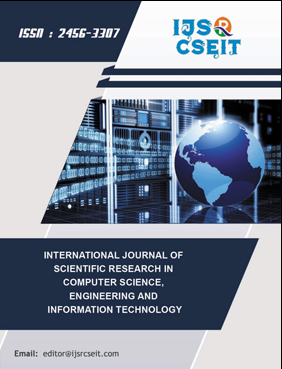Decoding Role-Based Access Control (RBAC)
DOI:
https://doi.org/10.32628/CSEIT251112211Keywords:
Role-Based Access Control (RBAC), Cloud Security, Least Privilege Principle, Access Management, Healthcare ComplianceAbstract
This article provides a comprehensive examination of Role-Based Access Control (RBAC) and its significance in modern cybersecurity, particularly within cloud environments. It explores the fundamental concepts of RBAC, including its core principle of assigning access rights based on organizational roles rather than individual users. The article delves into the implementation process, discussing role definition, permission assignment, and user-role association. It highlights the key advantages of RBAC, such as simplified permission management, enhanced security through the principle of least privilege, scalability in dynamic environments, and improved time efficiency in access management. A case study from the healthcare sector illustrates RBAC's practical application, emphasizing its role in maintaining regulatory compliance and efficient operations in complex organizational structures. The article also addresses potential challenges in RBAC implementation, including role explosion and over-permissive access, and provides strategies for overcoming these issues through meticulous planning, regular audits, and ongoing system optimization. By offering insights into both the benefits and challenges of RBAC, this article serves as a valuable resource for organizations seeking to enhance their access control strategies in an increasingly complex digital landscape.
📊 Article Downloads
References
Hu, V. C., Ferraiolo, D., Kuhn, R., Schnitzer, A., Sandlin, K., Miller, R., & Scarfone, K. (2014). Guide to Attribute Based Access Control (ABAC) Definition and Considerations. National Institute of Standards and Technology. https://nvlpubs.nist.gov/nistpubs/specialpublications/NIST.SP.800-162.pdf DOI: https://doi.org/10.6028/NIST.SP.800-162
IBM Security. (2019). Cost of a Data Breach Report. https://www.ibm.com/security/data-breach DOI: https://doi.org/10.1016/S1361-3723(19)30081-8
Sean Owens et al., Forrester Research. (Aug 02, 2021). The Total Economic Impact™ Methodology. https://www.forrester.com/report/the-total-economic-impact-methodology/RES174258
Alexander S. Gillis, TechTarget 2019, What is role-based access control (RBAC)? [Online] Available: https://www.techtarget.com/searchsecurity/definition/role-based-access-control-RBAC
Michael P. Gallaher, Alan C. O’Connor, Brian Kropp, NIST. (2020). The Economic Impact of Role-Based Access Control. https://www.nist.gov/document/report02-1pdf
de Carvalho Junior MA, Bandiera-Paiva P. Health Information System Role-Based Access Control Current Security Trends and Challenges. J Healthc Eng. 2018 Feb 19;2018:6510249. doi: 10.1155/2018/6510249. PMID: 29670743; PMCID: PMC5836325. [Online] Available: https://pmc.ncbi.nlm.nih.gov/articles/PMC5836325/ DOI: https://doi.org/10.1155/2018/6510249
Healthcare Information and Management Systems Society (HIMSS). (2023). 2023 HIMSS Cybersecurity Survey. https://www.himss.org/sites/hde/files/media/file/2024/03/01/2023-himss-cybersecurity-survey-x.pdf
IMI Institute. (2022). Identity and Access Management Report 2022. https://identitymanagementinstitute.org/identity-and-access-management-report-2022/
Foxpass. (Oct 16, 2023). How to implement role-based access control (RBAC). Medium. https://medium.com/@foxpass28/how-to-implement-role-based-access-control-rbac-8ee954ff861e
Downloads
Published
Issue
Section
License
Copyright (c) 2025 International Journal of Scientific Research in Computer Science, Engineering and Information Technology

This work is licensed under a Creative Commons Attribution 4.0 International License.




